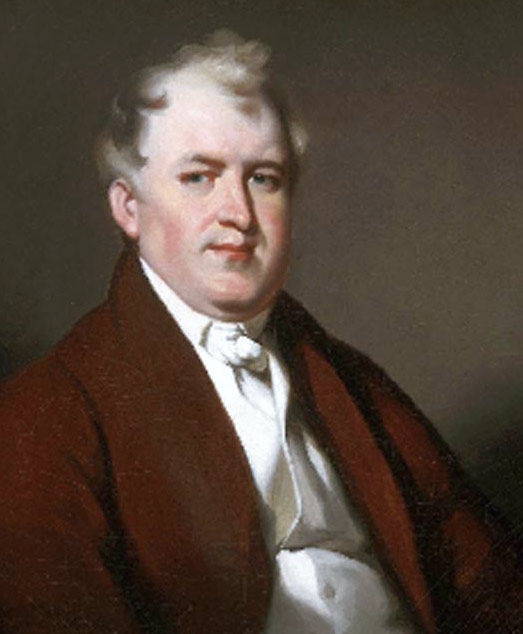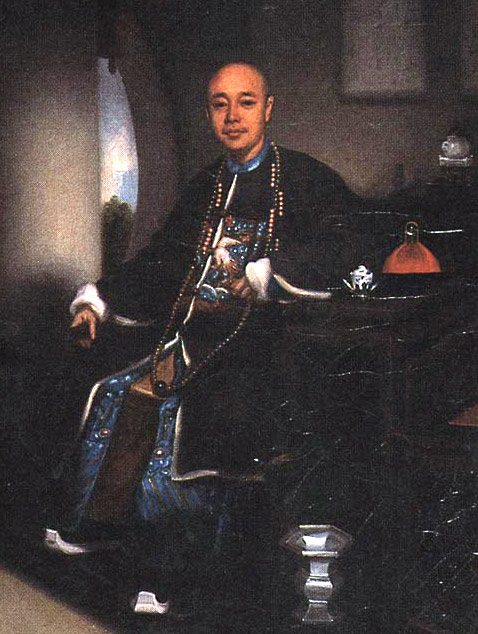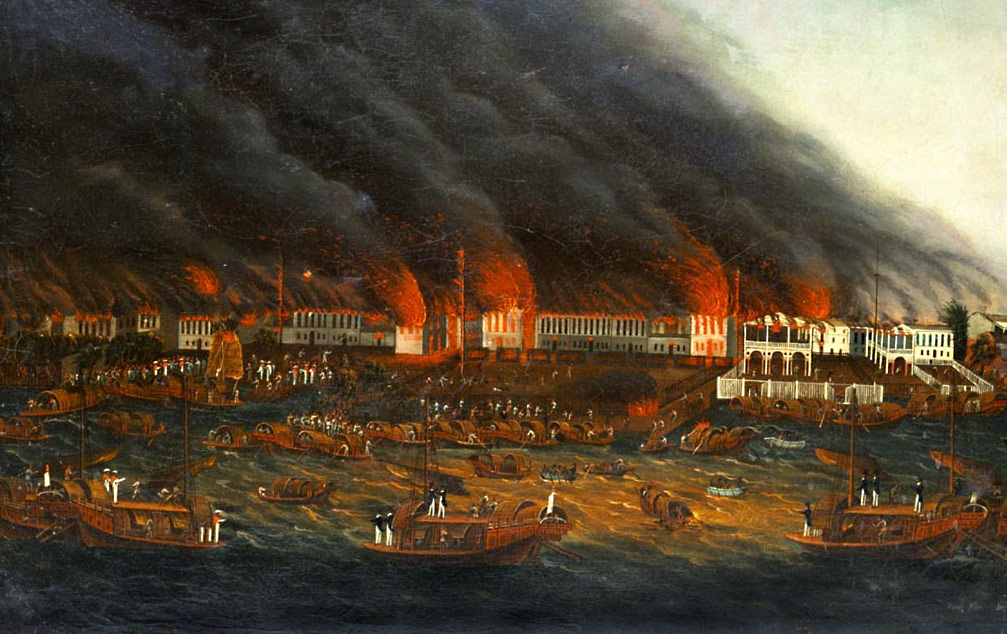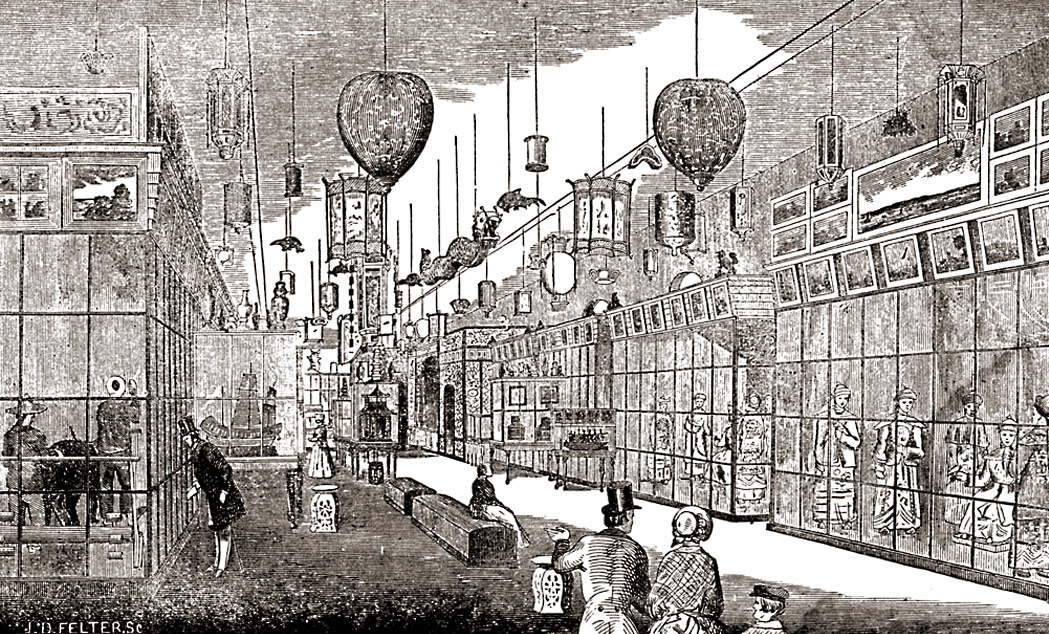Late one evening in November 1822, fire broke out in Canton not far from the foreign factories. The flames spread quickly—no firebreaks were created —and the merchants fled as their homes and wares were consumed. Tinqua came to Dunn’s aid, sending 80 of his men with a fleet of small boats. The men loaded Dunn’s goods onto the boats and rowed into the river, safe from the fire.
“The Hong Merchant Tinqua”
by Lam Qua, ca. 1840s
Peabody Essex Museum
[cwPT_1840s_ct78_Tenqua.jpg]
Tinqua’s losses were great—he had used many of his resources to save Dunn. Friendship may have played a part, but his seeming sacrifice was actually a clever strategy. Tinqua depended on Dunn’s business; Tinqua’s inventory, unlike Dunn himself, could be easily replaced. It proved a good decision, for he recovered his losses quickly, and both men continued to prosper.
“Canton Fire of 1822 ,” ca. 1822
Peabody Essex Museum
[cwC_1822_M22764_Fire2.jpg ]
By 1830 Dunn was wealthy, “very fond of good living” (according to Harriet Low), and an avid collector. Restricted to Canton, he enlisted Chinese agents to comb the country for rare curios and artifacts of Chinese culture. Grateful for his past anti-opium efforts, the emperor aided him, and in 1838 he returned to exhibit Ten Thousand Chinese Things in Philadelphia.
“Ten Thousand Chinese Things”
by J.D. Felter Sr.
[TenThousandTh_haj08blg.jpg]
Strategic cooperation driven by mutual interest was vital to the Canton trade system. The relationship of Philadelphia merchant Nathan Dunn (left) and Canton merchant Tinqua (possibly the man portrayed at right) is one example. Tinqua was new to foreign trade when Dunn arrived in 1818. He provided the tea and silk that Dunn exported, and the two prospered despite competition from better-established companies.
"Portrait of Nathan Dunn"
by George Chinnery, ca. 1830
Philadelphia Museum of Art
[cwPT_1830c_NathanDunn_phma.jpg]
Nathan Dunn, Tinqua,
& the Great Fire of 1822



